 W
WThe president of the Naval War College is a flag officer in the United States Navy. The President's House in Newport, Rhode Island is his official residence.
 W
WThe President's House is the home of the President of the Naval War College in Newport, Rhode Island. The house is a wooden, three-story building in Colonial Revival style located on a hill on Coaster's Harbor Island, overlooking Coaster's Harbor, Dewey Field, and Narragansett Bay.
 W
WBernard Lige Austin was a Vice Admiral of the United States Navy. His career included service in World War II, the Korean War, and the Cold War and command of submarines and surface ship forces, during which he became a distinguished combat commander of destroyers. He also commanded the United States Second Fleet, held numerous diplomatic, educational, and administrative staff positions, and a served a lengthy tour of duty as President of the Naval War College.
 W
WJohn Ashby Baldwin Jr. is a retired vice admiral of the United States Navy active during much of the Cold War. He commanded destroyers and a carrier battle group, saw service in the Vietnam War, served on the staffs of the Chief of Naval Operations, the Joint Chiefs of Staff, the Secretary of the Navy, and the Secretary of Defense, and was President of the Naval War College and of the National Defense University.
 W
WDonald Bradford Beary was a vice admiral of the United States Navy. His career included service in both World War I and World War II and a tour as President of the Naval War College. He commanded a wide variety of ships and organizations, and is particularly noted for his leadership during World War II in establishing and directing a large-scale U.S. Navy training program and for his pioneering and highly successful work as a commander of U.S. Navy underway replenishment forces.
 W
WVice Admiral (ret.) Arthur Karl Cebrowski was a United States Navy admiral. He also who served from October 2001 to January 2005 as Director of the Office of Force Transformation in the U.S. Department of Defense. In this position, he was responsible for serving as an advocate, focal point, and catalyst for the transformation of the United States military.
 W
WRear Admiral French Ensor Chadwick USN was a United States Navy officer who became prominent in the naval reform movement of the post-Civil War era. He was particularly noted for his contributions to naval education, and served as President of the Naval War College from 1900–1903.
 W
WShoshana Simone Chatfield is a United States Navy Rear Admiral, and is currently serving as the President of the Naval War College. She is the first woman to ever hold that position.
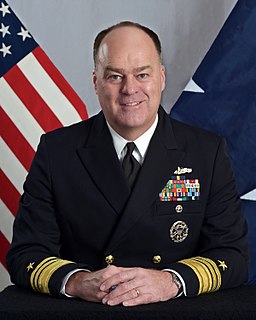 W
WJohn Nels Christenson is a retired vice admiral in the United States Navy who last served as the United States Military Representative to the NATO Military Committee, in Brussels, Belgium. He was the 53rd President of the Naval War College in Newport, Rhode Island from March 2011 to July 2013.
 W
WRichard Gary Colbert was a four-star admiral in the United States Navy who served as President of the Naval War College from 1968 to 1971, and as commander in chief of all NATO forces in southern Europe from 1972 to 1973. He was nicknamed "Mr. International Navy" as one of the very few senior admirals in the U.S. Navy identified with international naval cooperation during the Cold War.
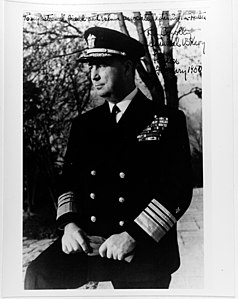 W
WRichard Lansing Conolly was a United States Navy admiral, who served during World War I and World War II.
 W
WCaspar Frederick Goodrich was an admiral of the United States Navy, who served in the Spanish–American War and World War I.
 W
WHuntington Hardisty was a United States Navy four star admiral who served as Vice Chief of Naval Operations (VCNO) from 1987 to 1988; and Commander in Chief, United States Pacific Command (USCINCPAC) from 1988 to 1991.
 W
WJohn Tucker "Chick" Hayward was an American naval aviator during World War II. He helped develop one of the two atomic bombs that was dropped on Japan in the closing days of the war. Later, he was a pioneer in the development of nuclear propulsion, nuclear weapons, guidance systems for ground- and air-launched rockets, and underwater anti-submarine weapons. A former batboy for the New York Yankees, Hayward dropped out of high school and lied about his age to enlist in the United States Navy at age 16. He was subsequently admitted to the United States Naval Academy at Annapolis, from which he graduated 51st in his class of 1930. He volunteered for naval aviation.
 W
WStuart Howe Ingersoll was a vice admiral of the United States Navy. He was a naval aviator whose career included service as an aircraft carrier commander during World War II and tours as commander-in-chief of the United States Seventh Fleet, President of the Naval War College, and Commandant of Midshipmen at the United States Naval Academy.
 W
WAdmiral Edward Clifford Kalbfus, nicknamed "Old Dutch", was a four-star admiral in the United States Navy who was commander of the Battle Force of the United States Fleet from 1938 to 1939 and President of the Naval War College from 1934 to 1936 and 1939 to 1942.
 W
WAustin Melvin Knight was an admiral in the United States Navy. He was commander in chief of the U.S. Asiatic Fleet from 1917 to 1918. His 1901 textbook Modern Seamanship was a standard reference for over eight decades.
 W
WRonald James Kurth was a rear admiral of the United States Navy. His career included service in the Cold War and Vietnam War. A naval aviator and Russian area studies scholar fluent in the Russian language, he served on diplomatic posts in Moscow and on the staff of the Chief of Naval Operations and was President of the Naval War College.
 W
WHarris Laning was a prominent officer in the United States Navy who eventually rose to the rank of Admiral. He was the father of Caleb Barrett Laning, who also achieved that ranking.
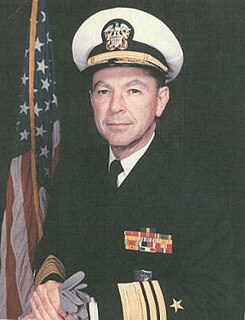 W
WJulien Johnson LeBourgeois was a retired vice admiral of the United States Navy. His career included service in World War II, the Cold War, and the Vietnam War, duty aboard and command of cruisers and destroyers, various planning and staff assignments, and a tour as President of the Naval War College.
 W
WStephen Bleecker Luce was a U.S. Navy admiral. He was the founder and first president of the Naval War College, between 1884 and 1886.
 W
WAlfred Thayer Mahan was a United States naval officer and historian, whom John Keegan called "the most important American strategist of the nineteenth century." His book The Influence of Sea Power Upon History, 1660–1783 (1890) won immediate recognition, especially in Europe, and with its successor, The Influence of Sea Power Upon the French Revolution and Empire, 1793–1812 (1892), made him world-famous and perhaps the most influential American author of the nineteenth century.
 W
WRear Admiral Ronald F. Marryott was the Superintendent of the United States Naval Academy from 1986 to 1988. He served as president and CEO of the George C. Marshall Foundation, and president and CEO of the Naval Academy Alumni Association from 1996 to 2000. He also was President of the Naval War College from 1985 to 1986.
 W
WAdmiral Lynde Dupuy McCormick was a four-star admiral in the United States Navy who served as vice chief of naval operations from 1950 to 1951 and as commander in chief of the United States Atlantic Fleet from 1951 to 1954, and was the first supreme allied commander of all NATO forces in the Atlantic.
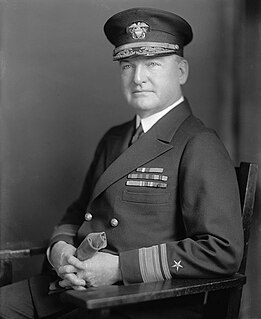 W
WLuke McNamee was a United States Navy Admiral, businessman, and the 10th and 12th Naval Governor of Guam. He served in the Navy for 42 years, during which time he held multiple commands. During the Spanish–American War, he earned the Navy Cross, and later the Legion of Honour. Earlier on his career, he served as governor, and expanded funding for fighting the infectious diseases running through the native population. He represented the U.S. Navy as a delegate to the Paris Peace Conference in 1919. He later became Director of the Office of Naval Intelligence. He was promoted to full admiral after being placed in charge of the Battle Fleet. After this command, he served as President of the Naval War College before retiring in 1934. After leaving the Navy, he became President and Chairman of the Mackay Radio and Telegraph Company, where he aggressively expanded telegraph and radio service overseas.
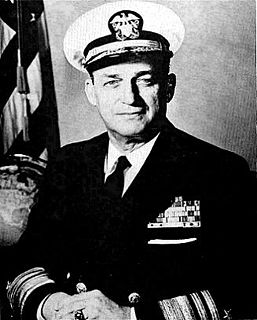 W
WCharles Leroy Melson was a vice admiral of the United States Navy. His career included service in World War II, the Korean War, and the Cold War, command of the United States First Fleet and of the United States Taiwan Defense Command, and tours of duty as Superintendent of the United States Naval Academy and President of the Naval War College.
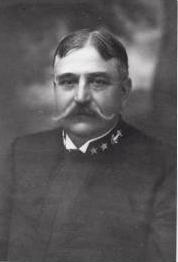 W
WRear Admiral John Porter Merrell was an officer in the United States Navy. He served in the Spanish–American War and as the 11th President of the Naval War College.
 W
WWilliam Veazie Pratt was an admiral in the United States Navy. He served as the President of the Naval War College from 1925 to 1927, and as the 5th Chief of Naval Operations from 1930 to 1933.
 W
WVice Admiral Joel Roberts Poinsett Pringle was a distinguished officer of the United States Navy, serving from 1894 to 1932.
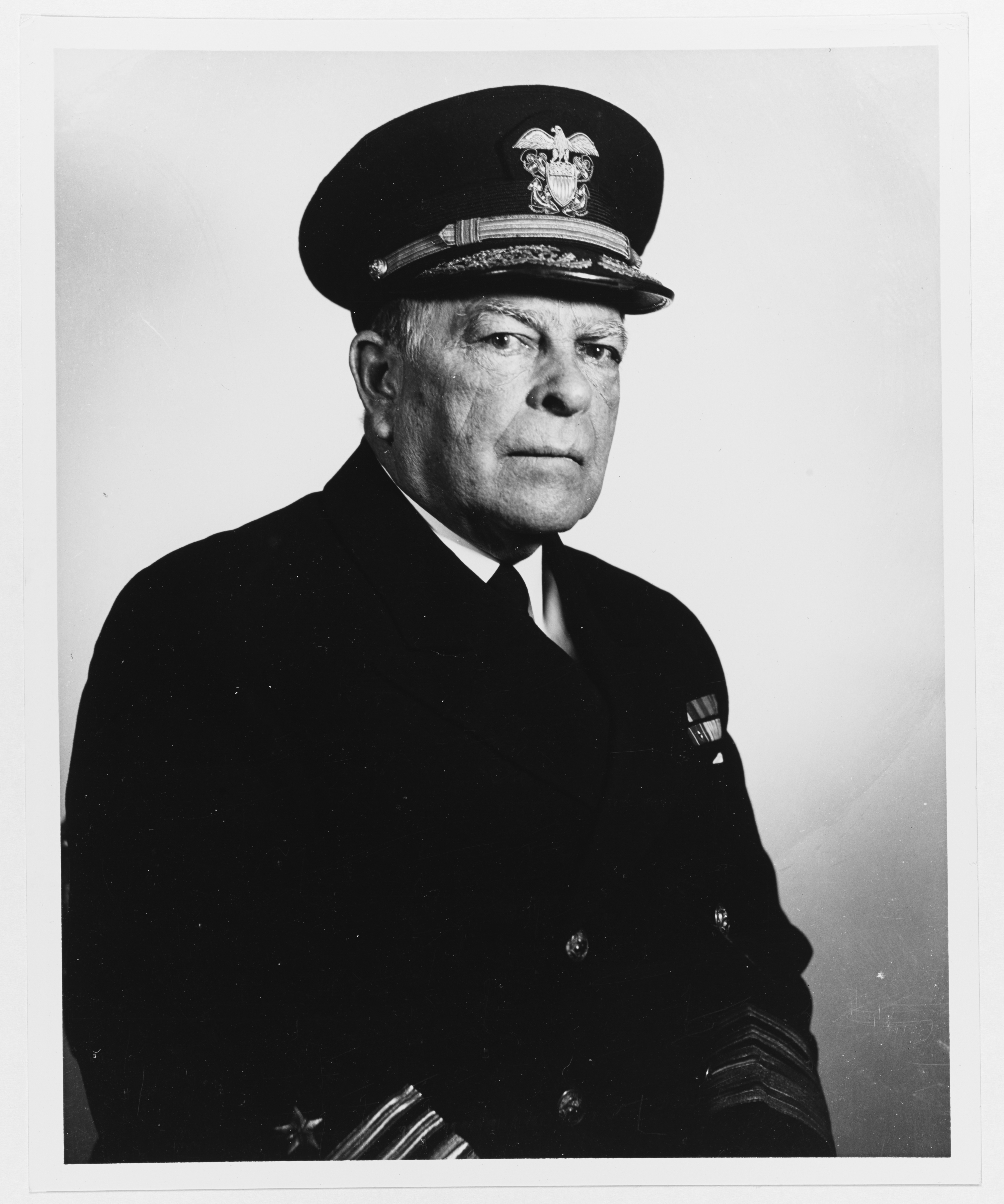 W
WVice Admiral William Satterlee Pye, United States Navy, was a U.S. Navy officer who served during World War I and World War II, but never saw combat action. His last active-duty appointment was as President of the Naval War College, in 1942–1946. His awards included the Navy Cross for his distinguished service as a staff officer during World War I.
 W
WRodney Paul Rempt is a retired Vice Admiral of the United States Navy who served as the 58th Superintendent of the U.S. Naval Academy from 2003 to 2007.
 W
WThomas Hinckley Robbins Jr. was a rear admiral of the United States Navy. A naval aviator, his career included command of an aircraft carrier during World War II, service as a key advisor to the United States Secretary of the Navy, and a tour as President of the Naval War College.
 W
WRear Admiral Raymond Perry Rodgers was an officer in the United States Navy. He served as the second head of the Office of Naval Intelligence and as the 12th President of the Naval War College and fought in the Spanish–American War.
 W
WWilliam Ledyard Rodgers was a vice admiral of the United States Navy. His career included service in the Spanish–American War and World War I, and a tour as President of the Naval War College. Rodgers was also a noted historian on military and naval topics, particularly relating to ancient naval warfare.
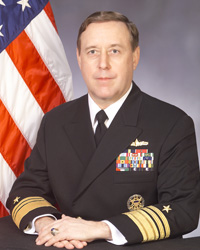 W
WRonald A. Route is a retired Vice Admiral and former Naval Inspector General of the United States Navy and a former President of the Naval War College. On July 16, 2013, Vice Admiral Route was named President of the Naval Postgraduate School.
 W
WBenedict Joseph Semmes Jr. was a vice admiral of the United States Navy. His career included service in World War II and the Cold War, command of destroyers, a lengthy tour as Chief of Naval Personnel, command of the United States Second Fleet, duty as Deputy Chief of Naval Operations, and a tour as President of the Naval War College.
 W
WJames Edward Service was a vice admiral of the United States Navy active during much of the Cold War. A naval aviator, he flew combat missions in the Korean War and Vietnam War, commanded aviation units and various ships including aircraft carriers, served as a test pilot, and was President of the Naval War College.
 W
WJacob Lawrence Shuford was a rear admiral of the United States Navy. His career included service in the Cold War, Kosovo War, and Operation Desert Fox. He commanded surface combatants, served on the staffs of the Chief of Naval Operations, the Joint Chiefs of Staff, and the Secretary of the Navy, coordinated Navy legislative activities in the United States Senate, and his final assignment as President of the Naval War College.
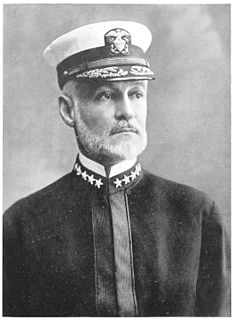 W
WWilliam Sowden Sims was an admiral in the United States Navy who fought during the late 19th and early 20th centuries to modernize the navy. During World War I he commanded all United States naval forces operating in Europe. He also served twice as president of the Naval War College.
 W
WCharles Philip Snyder was a four-star admiral in the United States Navy who served as the U.S. Navy's first Naval Inspector General during World War II.
 W
WRear Admiral Charles Stillman Sperry was an officer in the United States Navy.
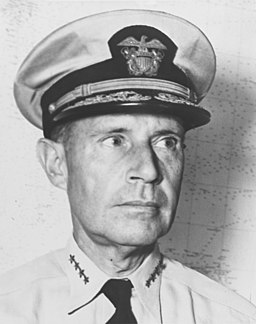 W
WRaymond Ames Spruance was a United States Navy admiral during World War II. He commanded U.S. naval forces during two of the most significant naval battles that took place in the Pacific Theatre: the Battle of Midway and the Battle of the Philippine Sea. At Midway, Spruance scored the first major victory for the United States over Japan; most historians consider Midway the turning point of the Pacific War.
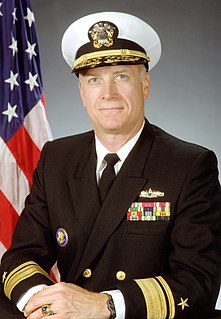 W
WJames R. Stark is a retired rear admiral of the United States Navy who served during the Cold War and in the Vietnam War and oversaw operations related to the Yugoslav Wars of the 1990s. A surface warfare officer, his career included command of ships at sea, senior U.S. Navy and North Atlantic Treaty Organization (NATO) commands, staff assignments with the Chief of Naval Operations and the National Security Council, and a tour as President of the Naval War College.
 W
WJames Bond Stockdale was a United States Navy vice admiral and aviator awarded the Medal of Honor in the Vietnam War, during which he was a prisoner of war for over seven years.
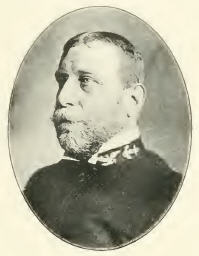 W
WCharles Herbert Stockton was a rear admiral in the United States Navy and the U.S. Navy's first uniformed expert in International Law. Stockton served as the President of the Naval War College, and later served as President of the George Washington University from 1910 to 1918
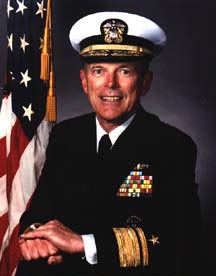 W
WJoseph Charles Strasser was a retired rear admiral of the United States Navy. His career included service in destroyers during the Cold War, two tours as executive assistant to senior military leaders, and a tour as President of the Naval War College.
 W
WHenry Clay Taylor was a rear admiral in the United States Navy who served in the American Civil War and the Spanish–American War. He also served as Chief of the Bureau of Navigation and President of the Naval War College.
 W
WStansfield Turner was an admiral in the United States Navy who served as President of the Naval War College (1972–1974), commander of the United States Second Fleet (1974–1975), Supreme Allied Commander NATO Southern Europe (1975–1977), and was Director of Central Intelligence (1977–1981) under the Carter administration. A graduate of University of Oxford and the United States Naval Academy, Turner served for more than 30 years in the Navy, commanding warships, a carrier group, and NATO's military forces in southern Europe, among other commands.
 W
WEdward F. Welch Jr. was a rear admiral of the United States Navy active during much of the Cold War. His career included service as a submarine officer, positions related to nuclear warfare planning, arms control, and North Atlantic Treaty Organization affairs, and a tour as president of the Naval War College.
 W
WJames P. "Phil" Wisecup is a retired United States Navy vice admiral, who last serived as the 38th Naval Inspector General. Prior to that, he served as the president of the Naval War College. Since October 2013, he has been director of the Chief of Naval Operations Strategic Studies Group.